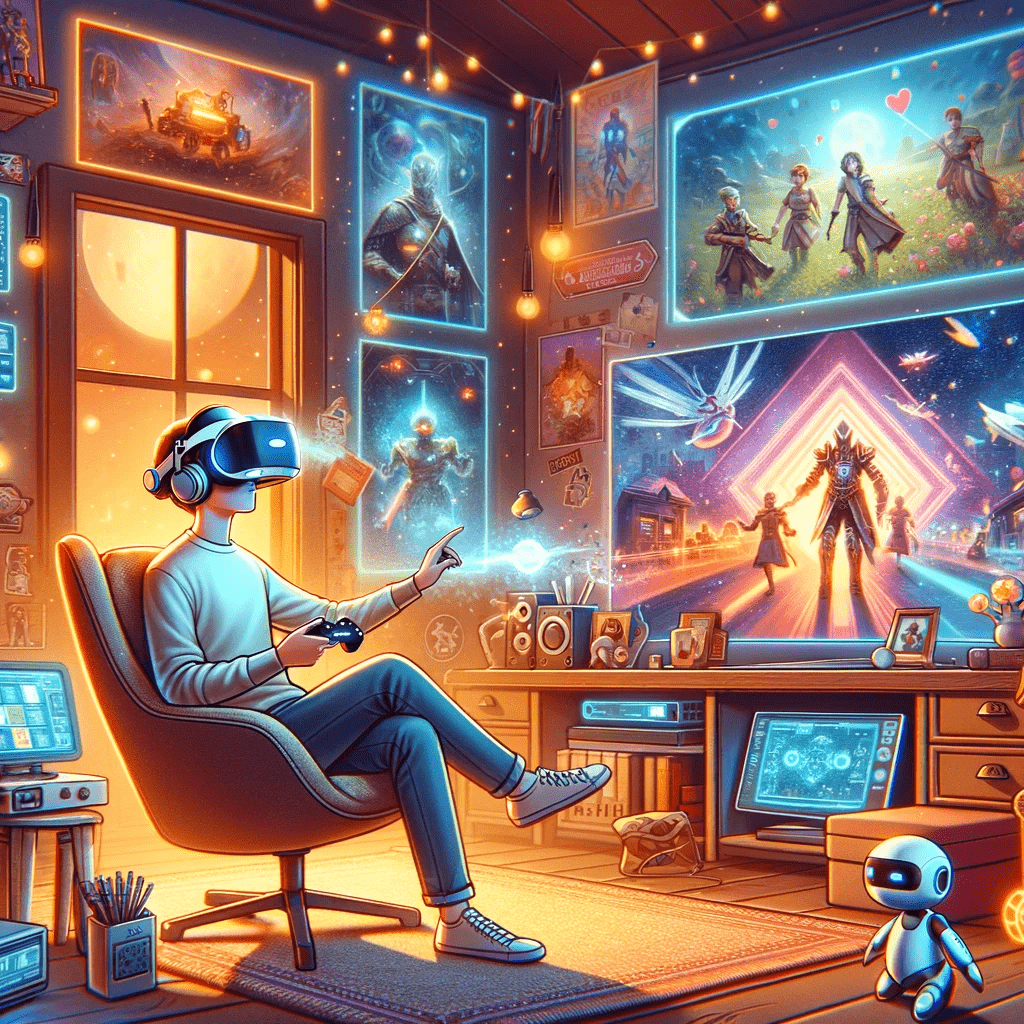In the heart of gaming’s evolution, AI’s ability to tailor difficulty is akin to a maestro conducting a symphony, orchestrating a challenge that resonates with the individual player’s skills. Imagine entering a game where the world responds not only to the buttons you press but also to the way you think and feel as you navigate through its challenges. This is what modern titles like ‘The Last of Us Part II’ achieve. The game reads your gameplay style and habits, modulating enemy tactics and resources to match your pace. It’s an intricate dance between the player and the game’s AI, ensuring that each playthrough is a unique performance, a story told anew.

An Ensemble of Digital Beings: NPCs with Depth and Soul
Consider the NPCs of today as cast members in an interactive drama, each with a script that’s written in real-time by the game’s AI. In ‘Red Dead Redemption 2’, characters lead lives that intersect with yours in meaningful ways. They remember your actions, react to the in-game economy, and even comment on the weather. This is a leap from the rigid, pre-programmed behaviors of yesteryear to a dynamic system that simulates life, blurring the lines between the virtual and the real. The AI-driven behaviors of these digital denizens lend a weight to your actions, as every encounter has the potential to unfold in countless ways, shaped by the silent calculations of a hidden artificial mind.
A Battle of Wits: The Intellectual Challenge of Strategy Games
The digital renditions of card games like Hearts and ‘Bridge’ have long been playgrounds for AI to test our strategic mettle. Here, AI serves as both opponent and teacher, a mirror reflecting our tactical strengths and weaknesses. As you play against the AI, it’s not just following the rules; it’s learning the art of deception and strategy, becoming a more formidable adversary with each shuffle of the deck. It’s a constant game of cat and mouse, where the AI’s evolving understanding of tactics ensures that no two games are alike, offering a crucible for the sharpening of your own strategic acumen.
The Heartstring Algorithm: AI as the Sculptor of Emotional Landscapes
Beyond the mechanics of gameplay, AI has a profound role in shaping the narrative and emotional journey of players. Games like ‘Life is Strange’ use AI to weave a narrative tapestry that reacts to your decisions, creating a storyline that is intimately yours. With each choice, the AI subtly shifts the narrative, leading to different character developments and endings. It’s a powerful tool that gives digital storytelling a new dimension, making the joy, the sorrow, and the tension you feel in these virtual worlds deeply personal. This emotional investment is the magic of AI in gaming; it creates stories that linger long after you’ve put down the controller.
Effective prompting allows AI to craft narratives that resonate deeply with players, making each decision feel impactful. For this job, you can use the best image AI generator on the market to create vivid, emotionally charged visuals that align perfectly with the narrative. These visuals can enhance the player’s experience, immersing them in the world you’ve crafted, and making the storytelling even more powerful.
Also Read: Tech Trends In Onboarding: The Evolution Of Web-Based Solutions
Conclusion: The Dawning of Interactive Renaissance
The advent of AI in gaming is more than just a technological marvel; it’s the dawning of a new age of interactive renaissance. With AI, games have become living entities with which we can converse, learn, and grow. They are no longer static canvases but dynamic worlds that evolve with our touch. This is the future of gaming — a future where AI is your rival, your ally, your storyteller, and perhaps, one day, your friend. As we stand on this frontier, we can only imagine the wonders that await as AI continues to push the boundaries of what’s possible, inviting us to a playground where the digital and the real are indistinguishably intertwined.


